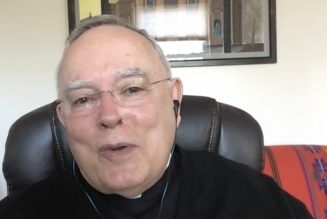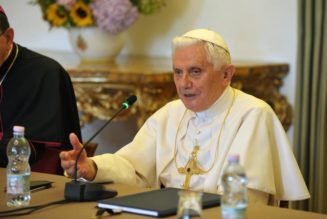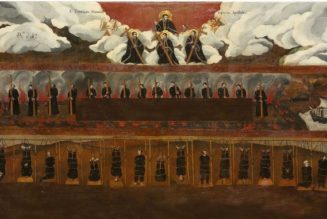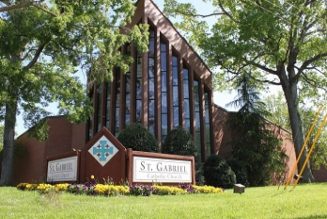If Bing Crosby playing Father O’Malley in “The Bells of St. Mary’s” and Bishop Fulton Sheen preaching on national television captured Catholicism in mid-20th-century America, then predator priests and empty pews represent the Church nowadays for many people in the U.S. culture.
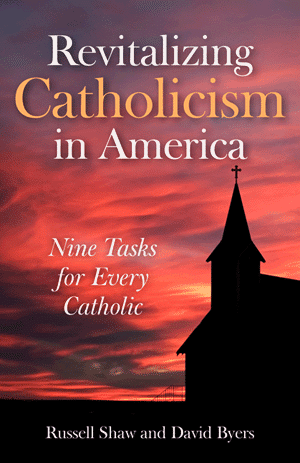

Russell Shaw’s and David Byers’ new book, “Revitalizing Catholicism in America: Nine Tasks for Every Catholic” (OSV, $17.95), tracks the Catholic Church’s decline in esteem and membership during the last 60 years. The abuse scandal and the pandemic are the most recent evidence. Yet, despite the real challenges facing the Church, the authors do not predict certain doom for the future. Rather, they foresee a renewal for the Church that could come from a faithful remnant who practice and pass on the faith of Jesus Christ. The remnant will include clergy and laity, but the renewal will happen only when lay people become active participants in the life of the Church as envisioned by the Second Vatican Council.
What happened?
How did the Church in the U.S. go from a vital, thriving institution with active parishes around the country to a corporate body barely breathing? A major contributing factor, according to the authors, was the easy assimilation of individual Catholics en masse into secular culture. Even before the pews started emptying, parishioners prioritized fitting in to their social circles rather than evangelizing them. The Church and the faith of Jesus Christ ceased being the organizing principle of people’s lives. Their minds and hearts had left the Church long before their hands and feet. Some of the clergy provided reasons to ignore ecclesial life. Now, the statistics compiled by organizations like the Center for Applied Research in the Apostolate confirm the exodus.
A renewal, the authors make clear, cannot begin by returning to the past. But it does mean being mindful in the present moment of how to live one’s faith in a society that rejects religious belief. Again, both clergy and laity alike must be part of the effort. However, just as the pews are being emptied, so are the altars; the Church in the U.S. is ordaining fewer priests every year. This means lay people will need to be more involved. But a passive laity, unwilling to bring their faith beyond the walls of their parish church, will simply repeat the negative trends of the past.
The authors focus their attention on lay people and how they can respond to breathe new life into the Church. That’s not to suggest that the clergy do not need renewal as well, but it does mean that a church without the active participation of the laity is an empty shell.
Role of the laity
The Second Vatican Council was clear about the responsibility of the laity. They certainly need to take part in the life of the Church, to celebrate the sacraments, and especially to partake in the Eucharist. But they also have a specific call, based on their situation in life: to “take up the renewal of the temporal order as their own special obligation” (Apostolicam actuositatem, No. 7).
As good as it is to have lay people participate in the Sunday liturgy as readers and ushers and, if needed, as extraordinary ministers of the Eucharist, their greater effort needs to be bringing the Faith to the communities in which they live: “where we live and work, raise our families, celebrate with our friends, and experience the joys and sorrows of the human condition.” In order to do this well, the authors contend that lay people need to live in intentional communities of disciples, where the Faith is practiced and supported by the members. Such a community grounds the individual in a life devoted to following Jesus and equips the person to be a witness outside the community too.
The temptation may be to retreat to a ghetto and wait out the dark ages. And if a proactive embracing of the Faith is eschewed, that may well happen. But that’s not the example Christ set; his followers need to be fed by him and then to share with others. The authors emphasize this both/and approach. Each person “needs to take responsibility for her or his share in the great project of revitalizing the Catholic Church in the United States” and, as disciples, we move outward to the nations, proclaiming the Father, Son and Holy Spirit, confident that every effort in Christ moves one toward eternal life in heaven.
Weather the storm
Shaw and Byers provide nine tasks or steps that lay people can take toward a renewal of the Church’s life in the U.S. These steps are not meant to be a blueprint but parts of an overall effort at living and sharing the Faith. The reader will find the steps in the final chapter of the book, but they can be summarized as accepting the call to evangelize the temporal order: In other words, those places outside the Church where lay people live their lives in the midst of the rest of society.
Instead of assimilating into the culture, lay people are charged with infusing the culture with the presence of Christ. It’s not a matter of preaching the Gospel to one’s coworkers at lunchtime (although that is not ruled out), but it’s more about allowing the aroma of Christ to attract others to the Faith, as St. Paul says to the Corinthians: “For we are the aroma of Christ for God among those who are being saved and among those who are perishing, to the latter an odor of death that leads to death, to the former an odor of life that leads to life” (2 Cor 2:15-16).
Hopefully, in addition to lay people hearing and accepting this call to bring Jesus to the world, the bishops will also recognize where the Church is headed these days. The bishops need to support the lay people and prepare them for the role they most certainly will have in the future of the Church in the U.S.
Shaw’s and Byers’ book offers a clear reading of the signs of the times, and the book points to a clear plan of action that can help lay people in particular step up and participate in the renewal of their church. It’s not a question of whether the Church will decline, but how will the clergy and laity respond to weather the storm and come out stronger once it passes.



